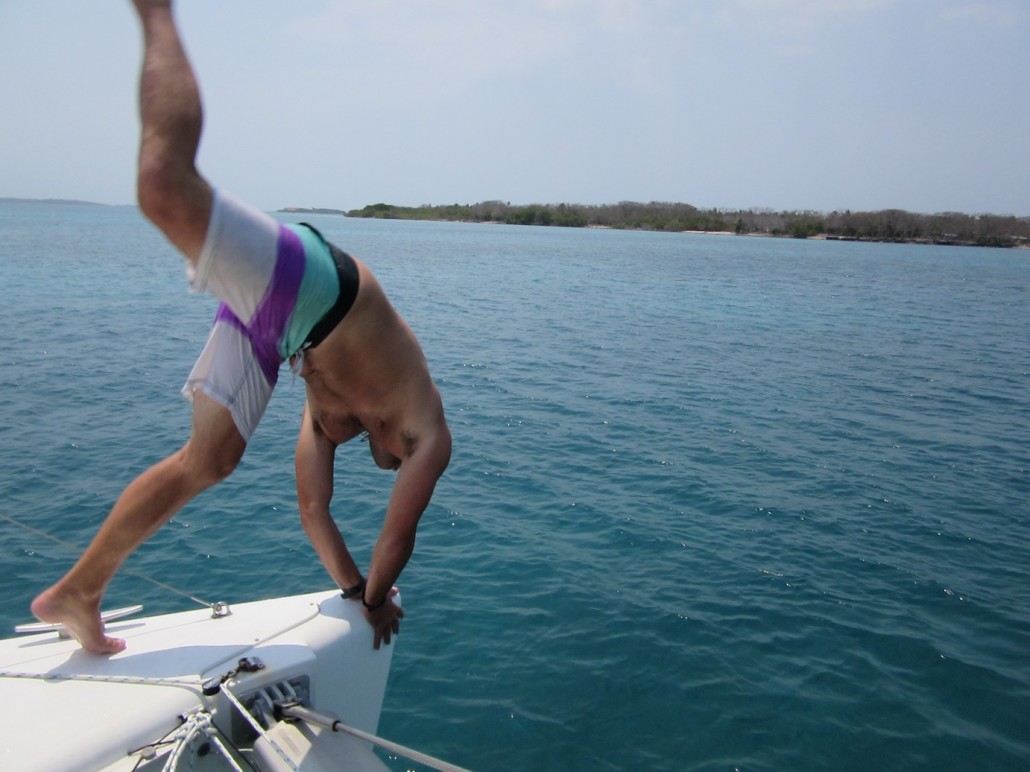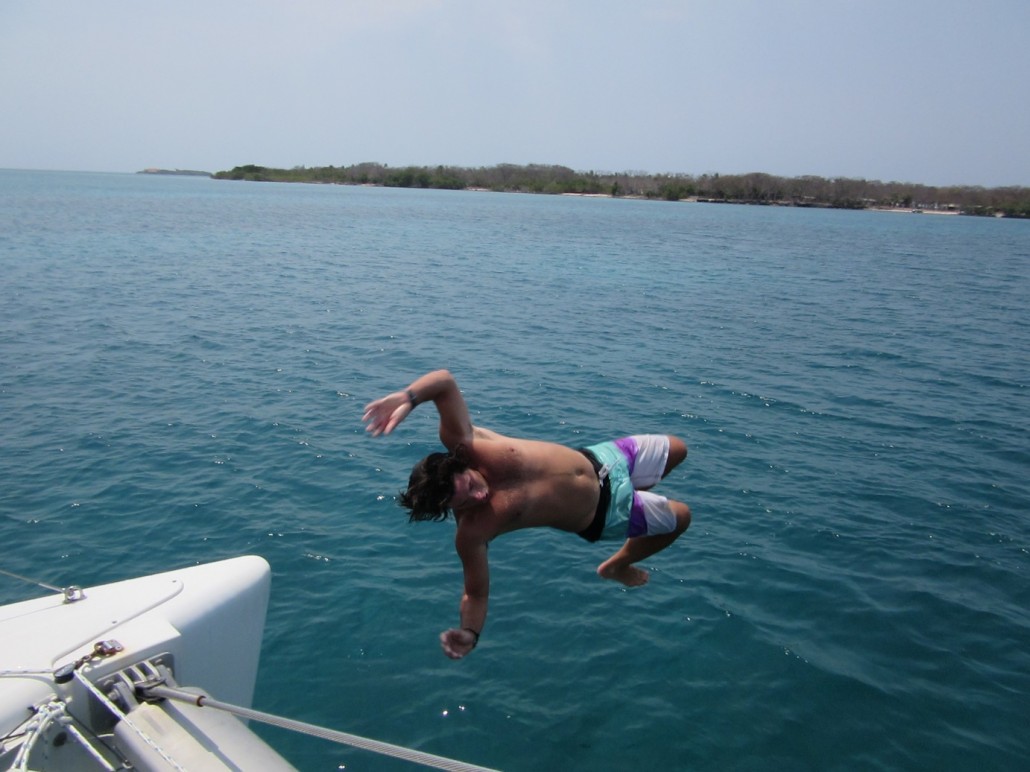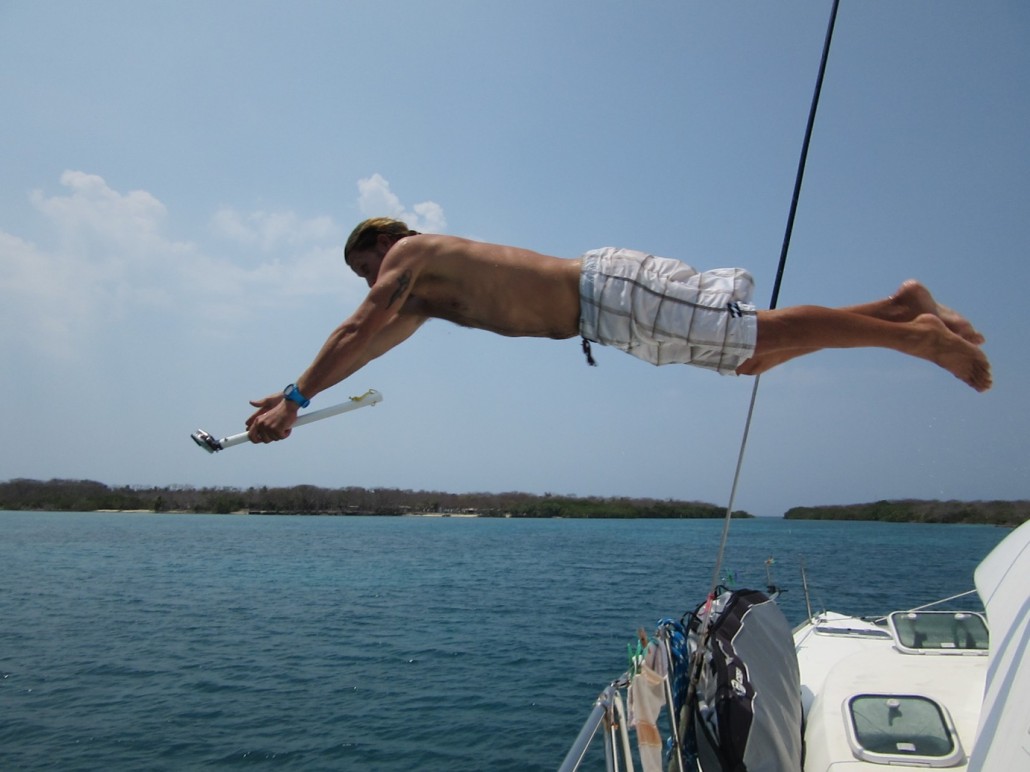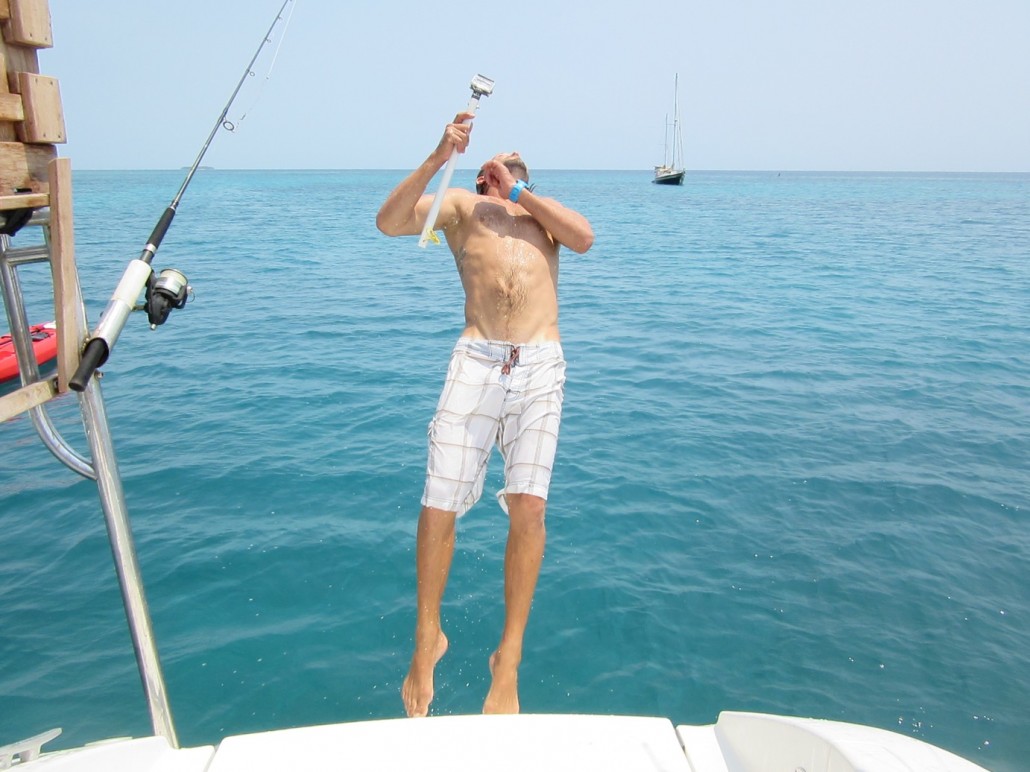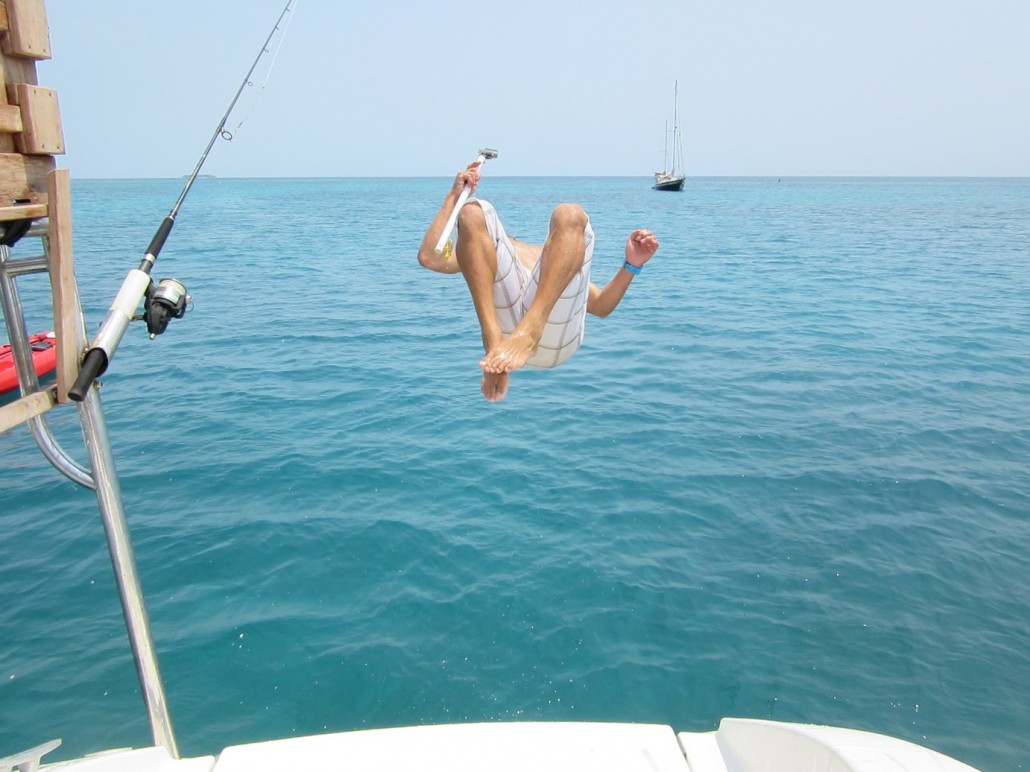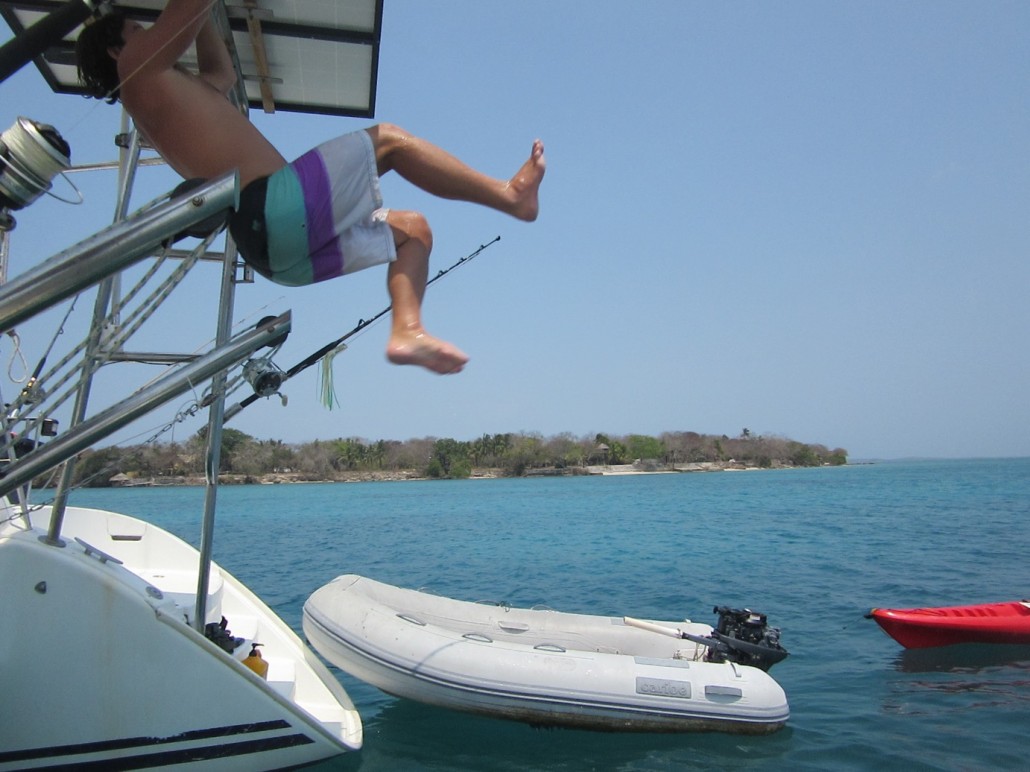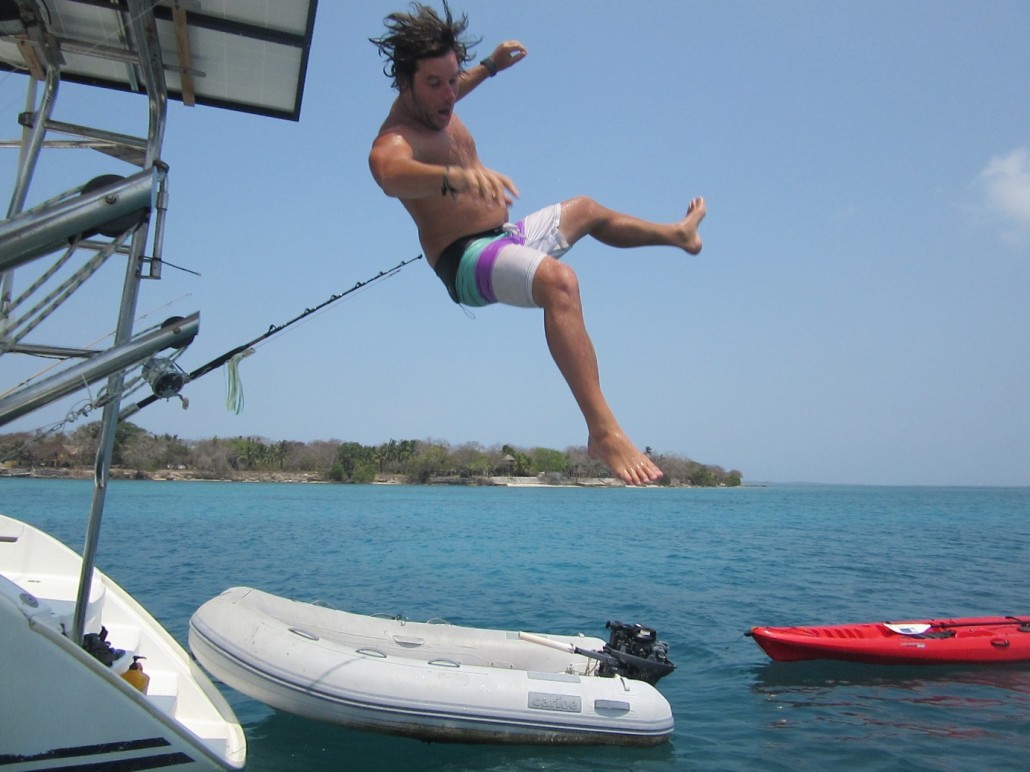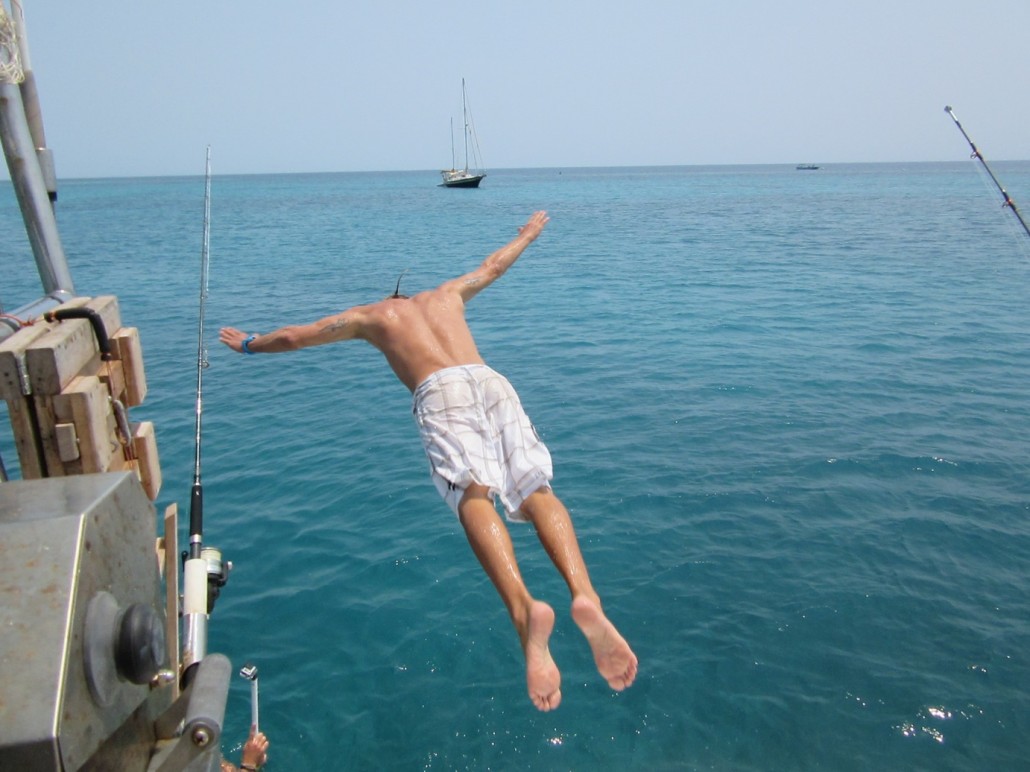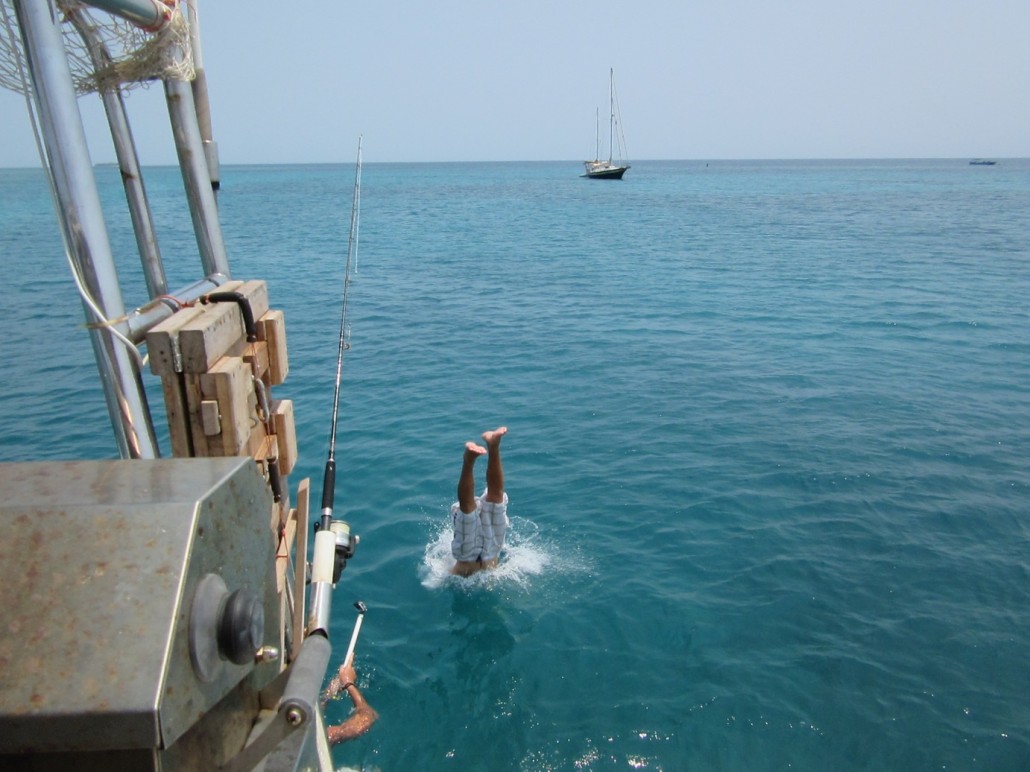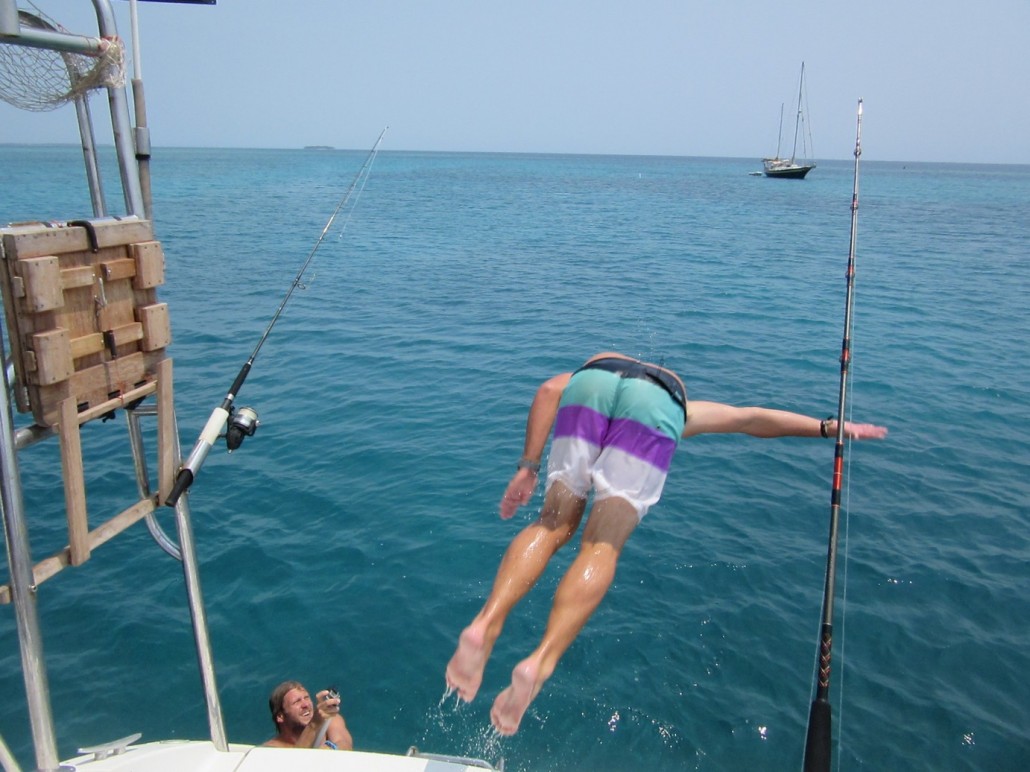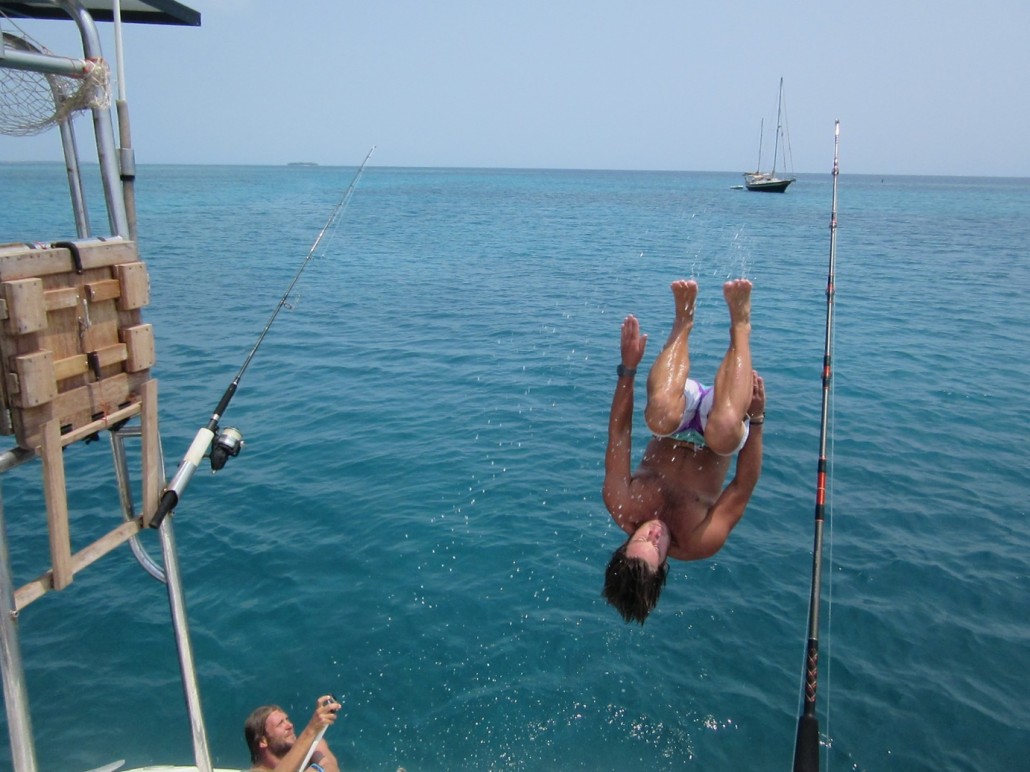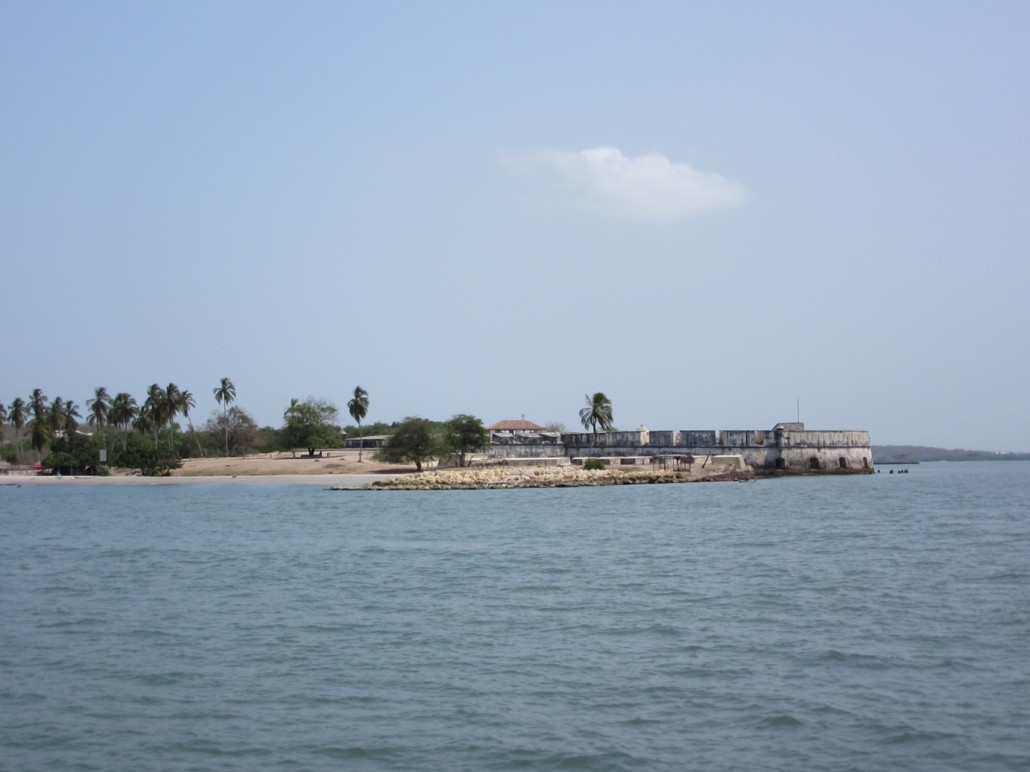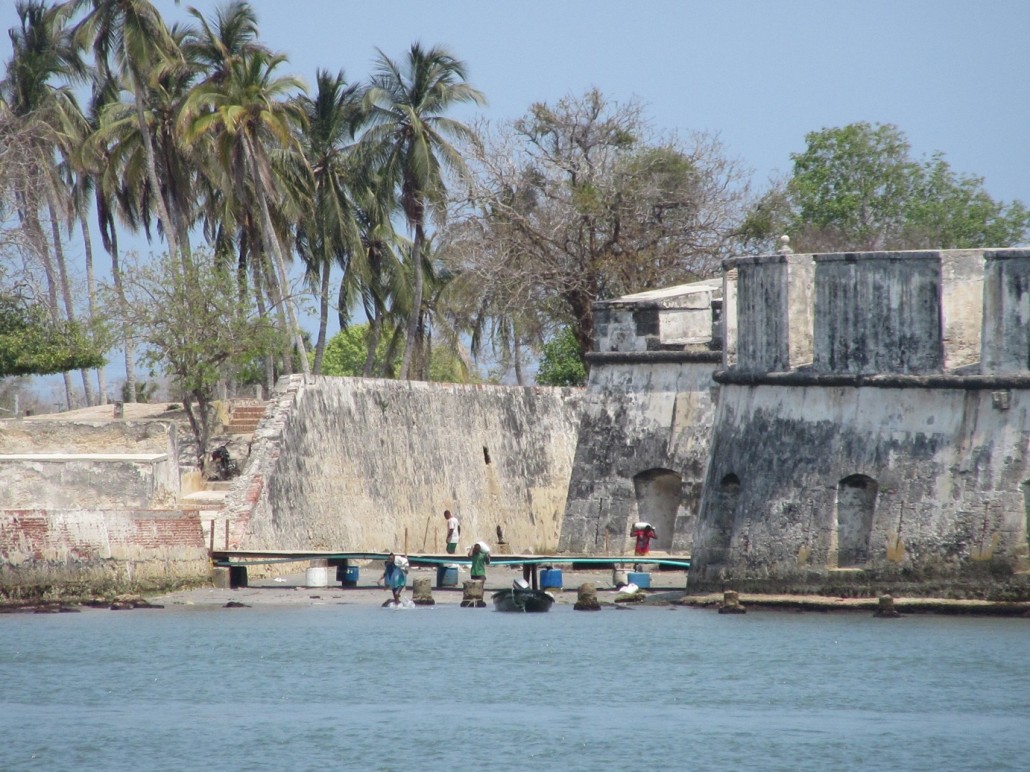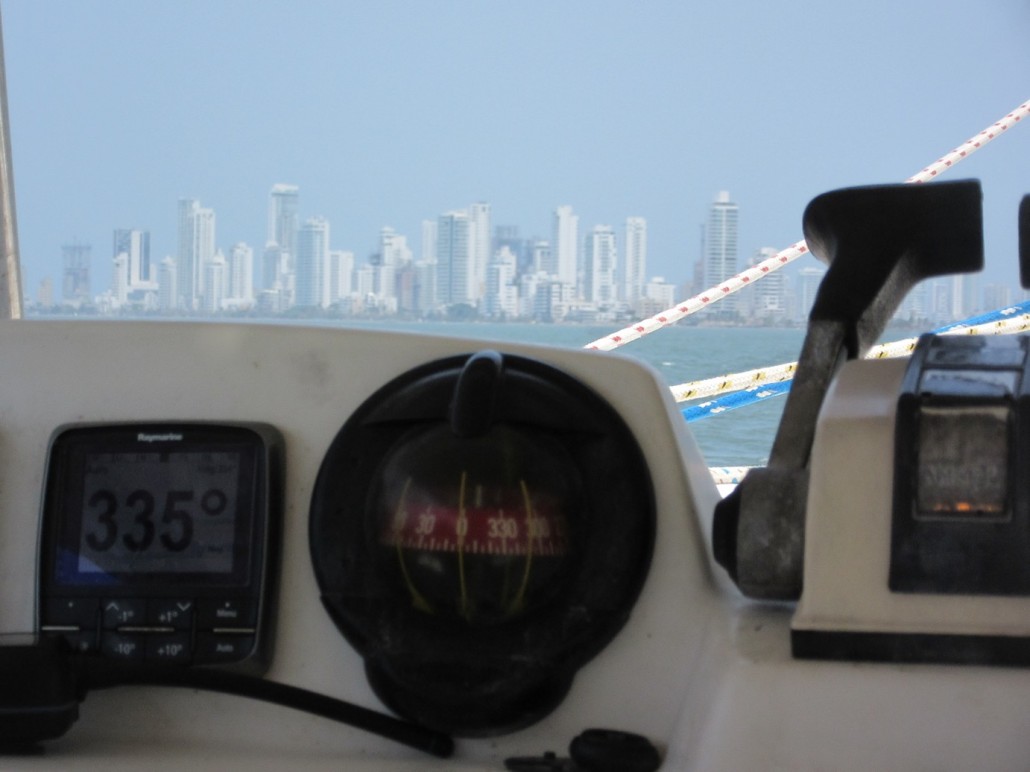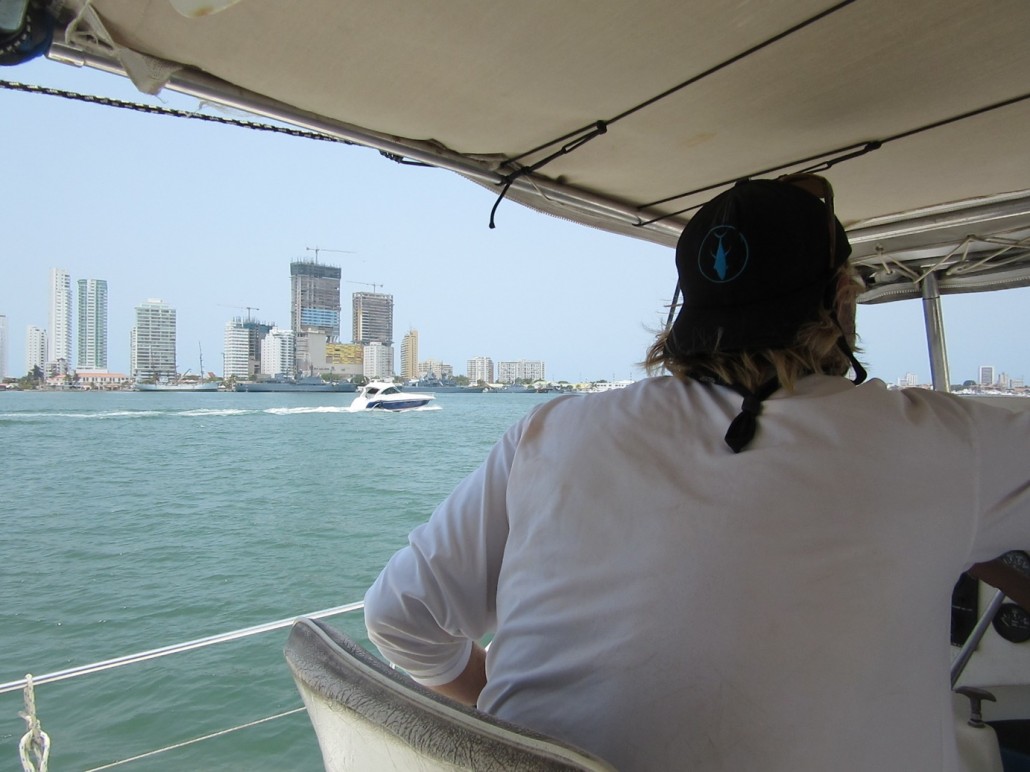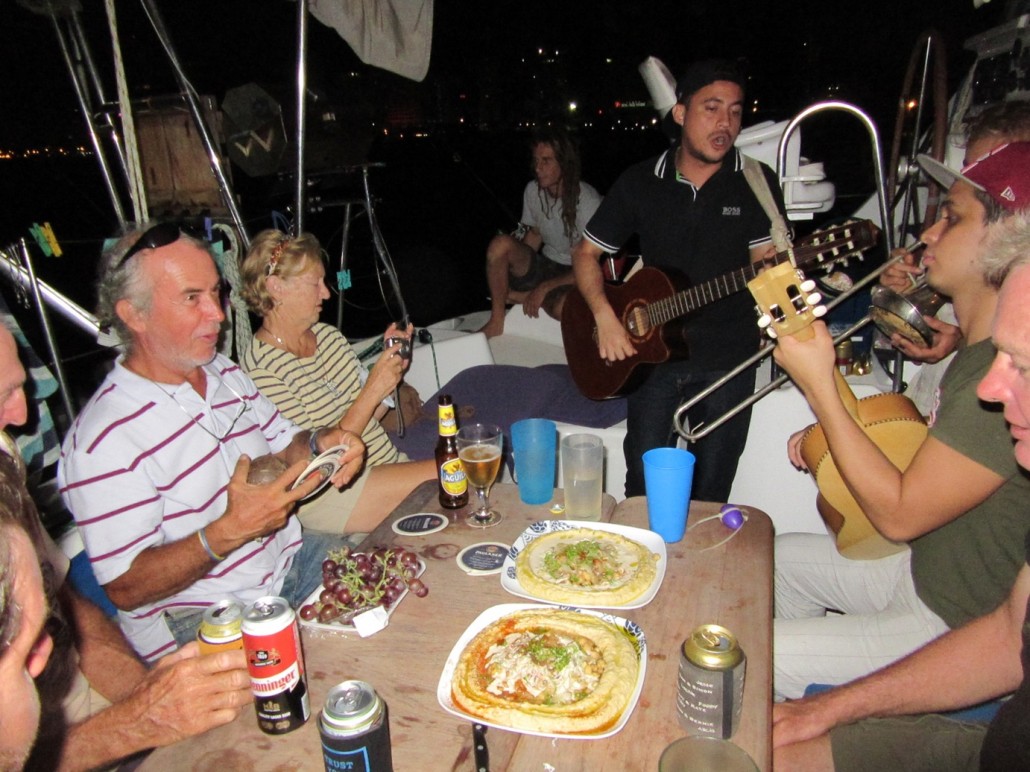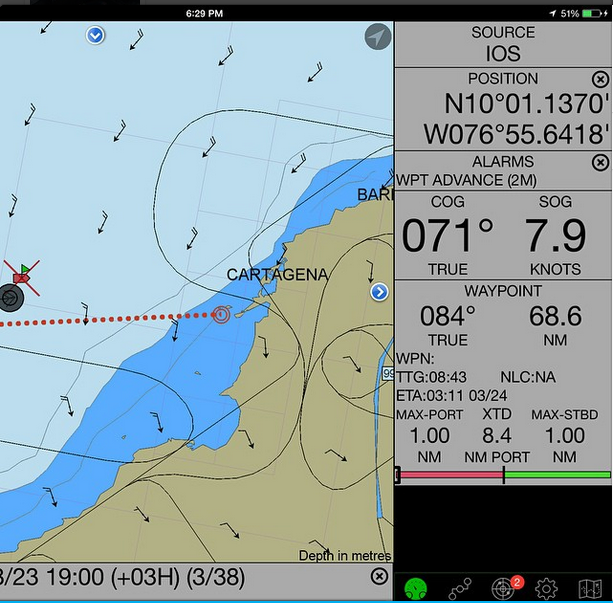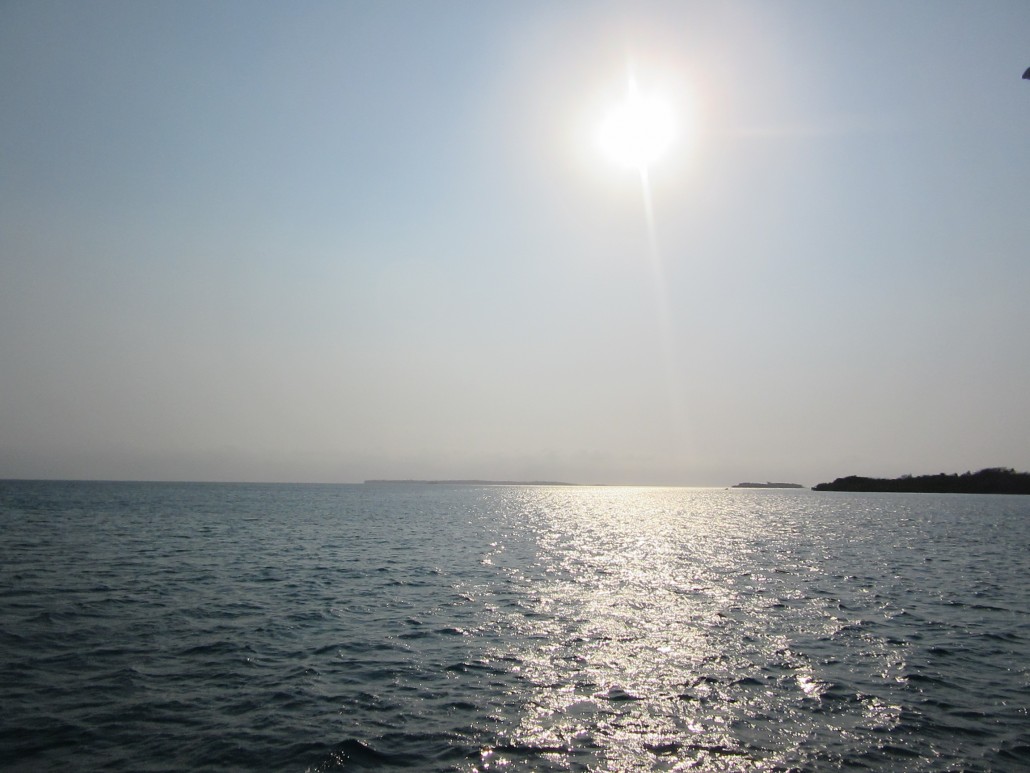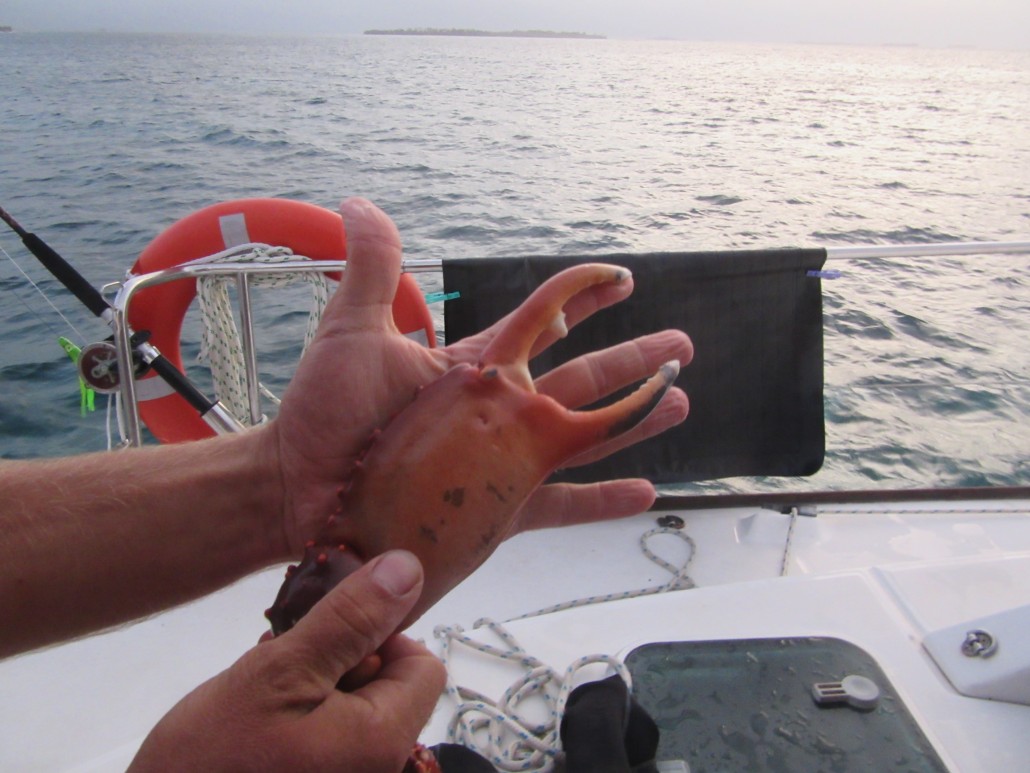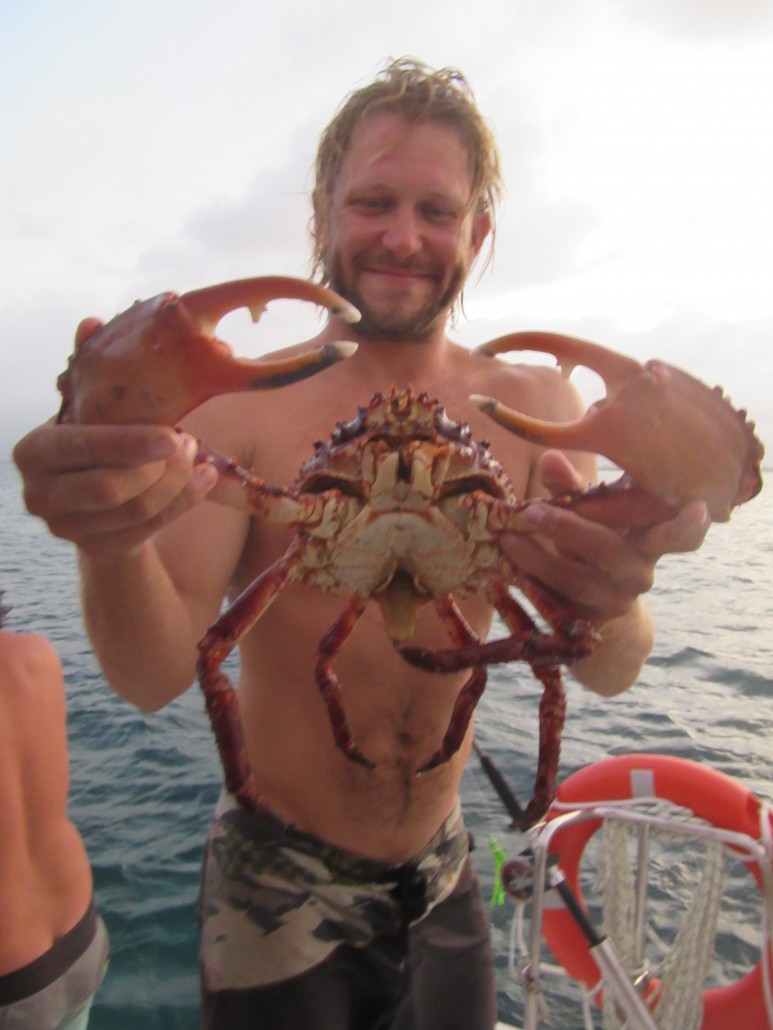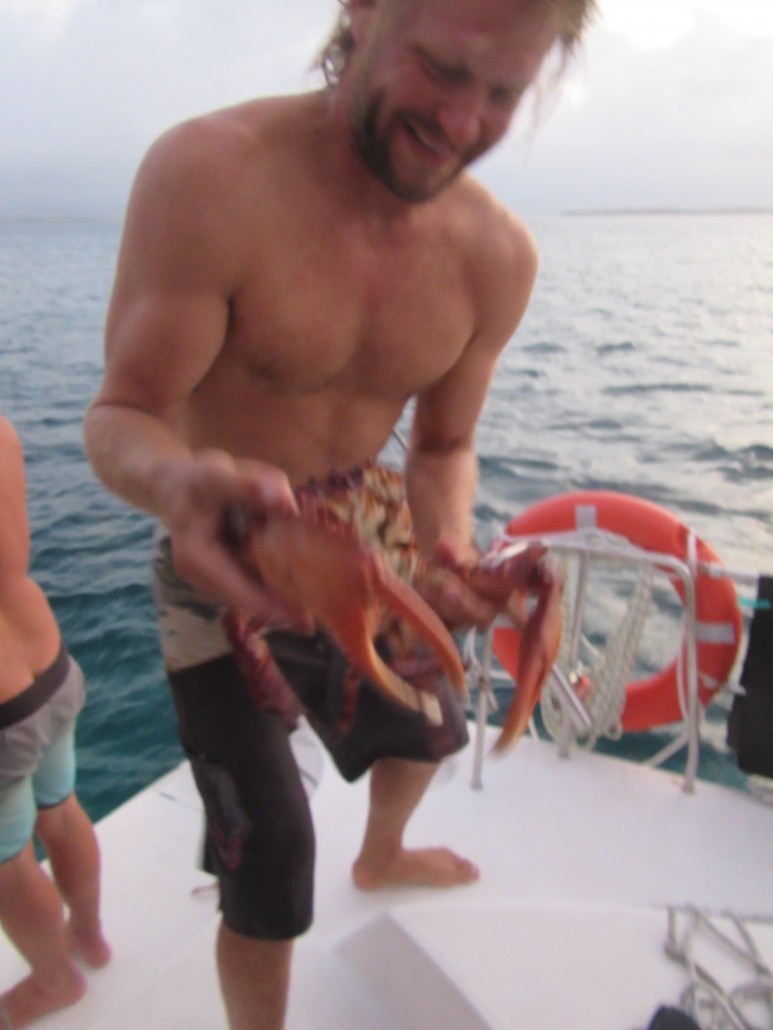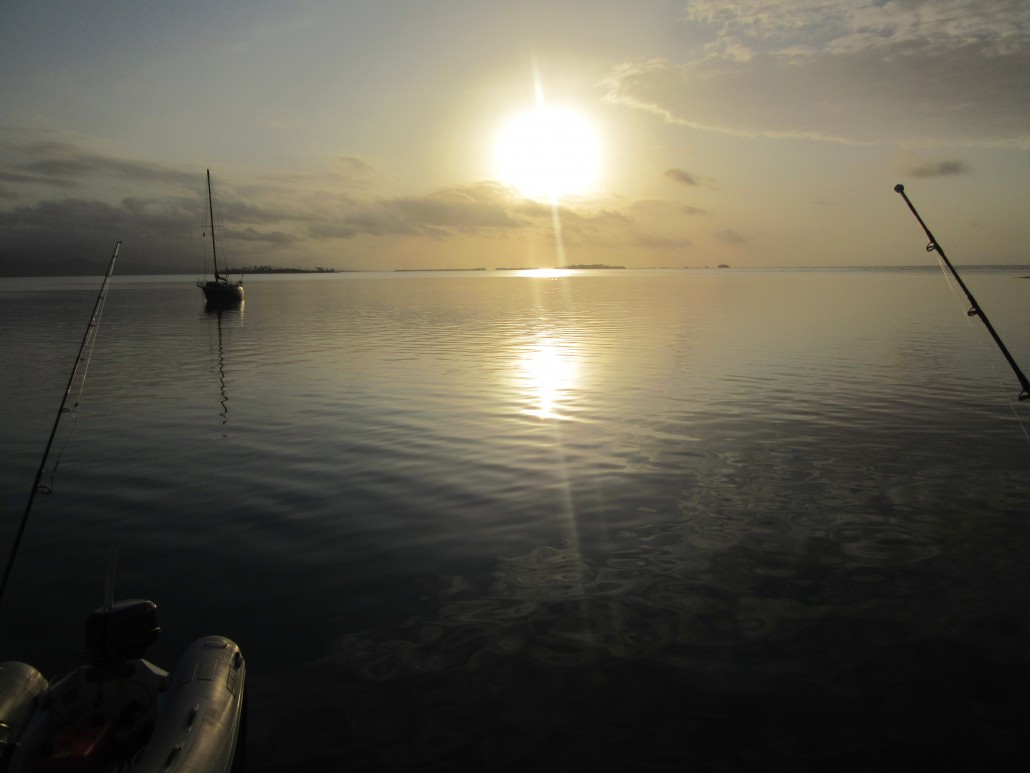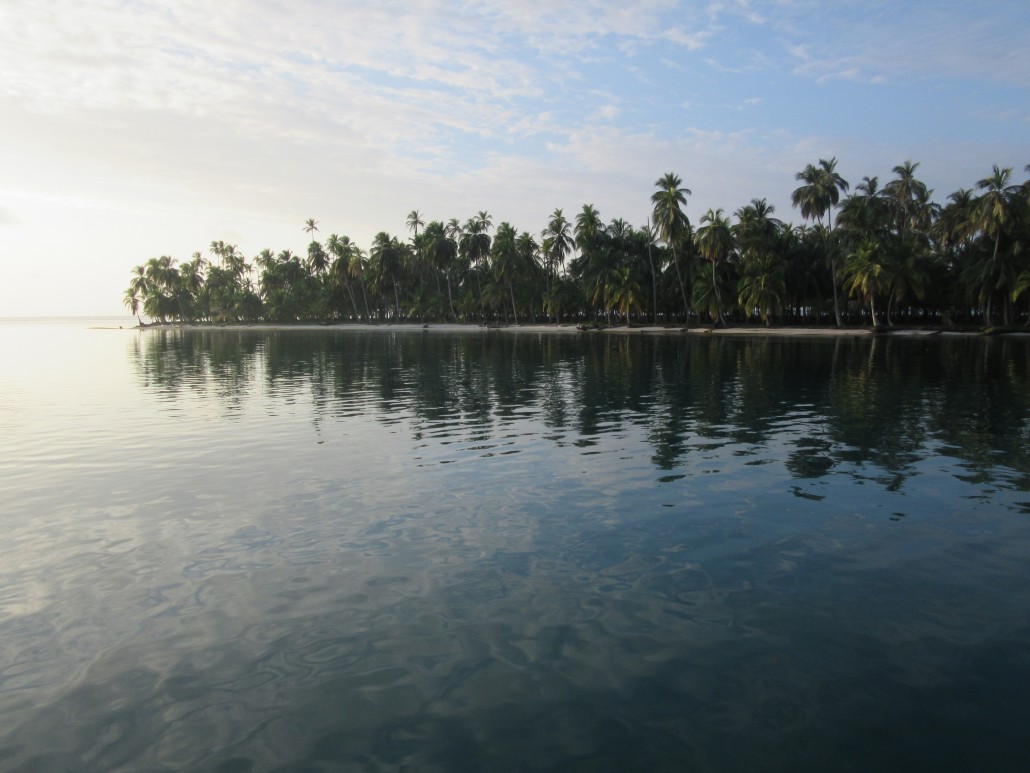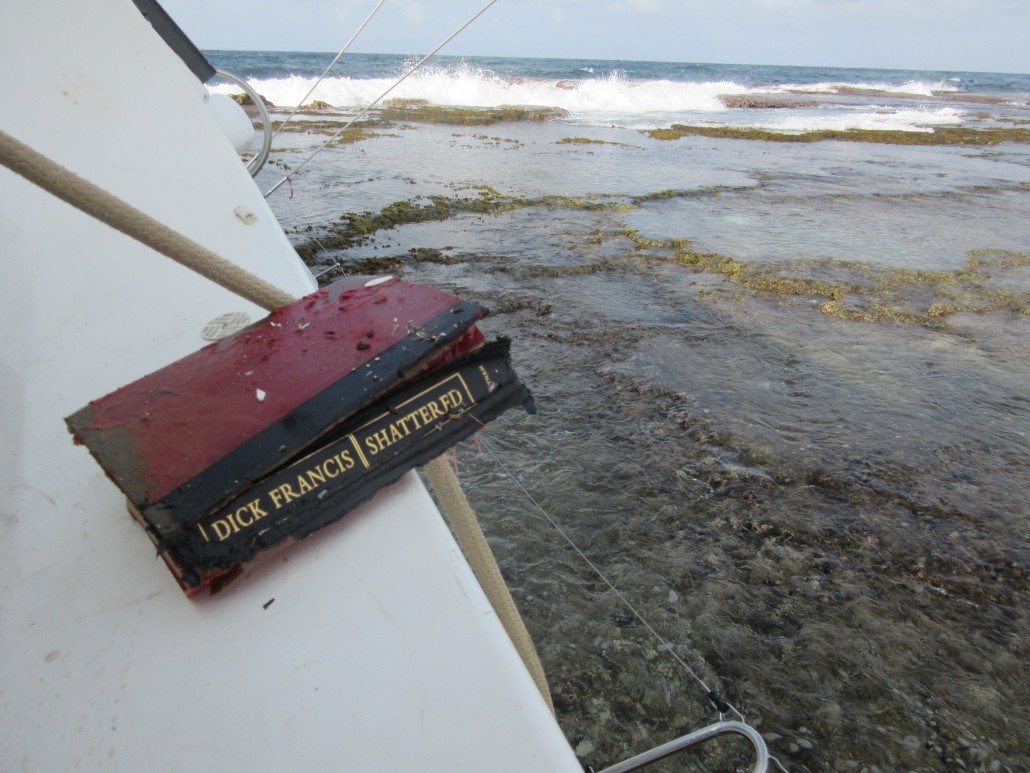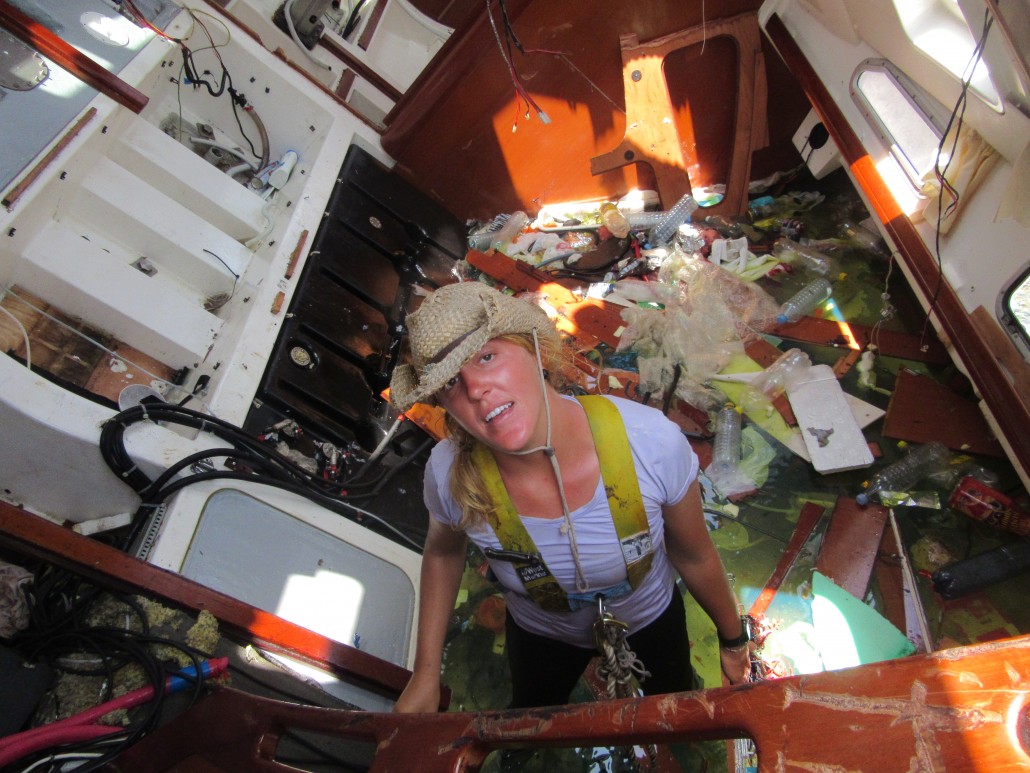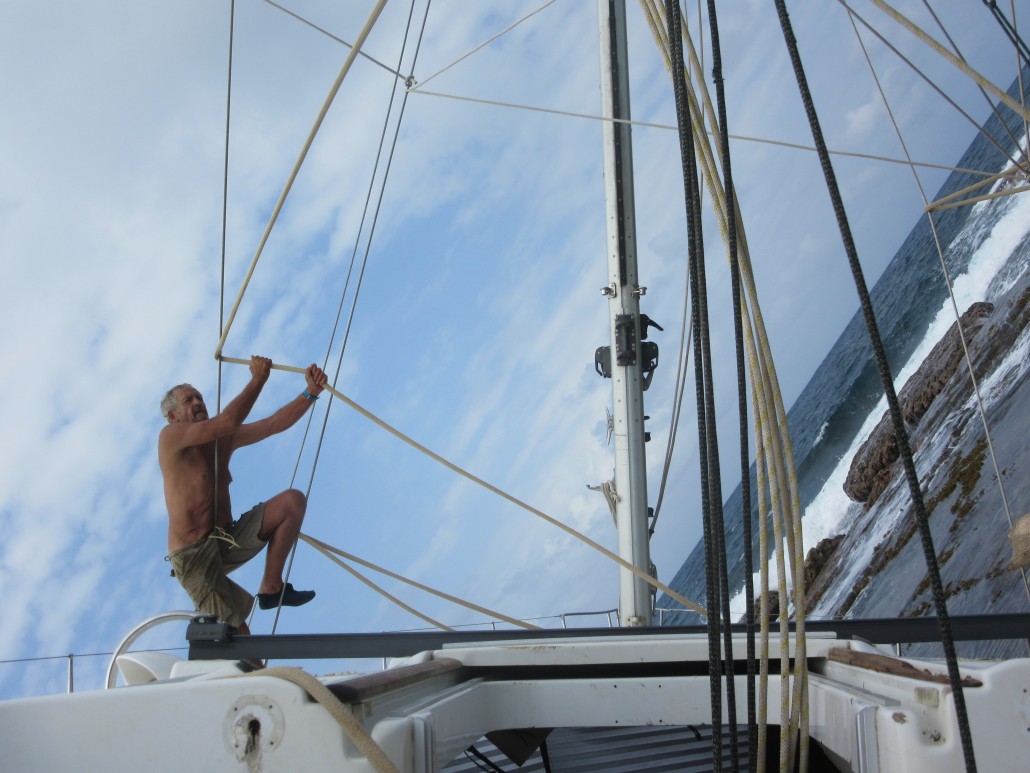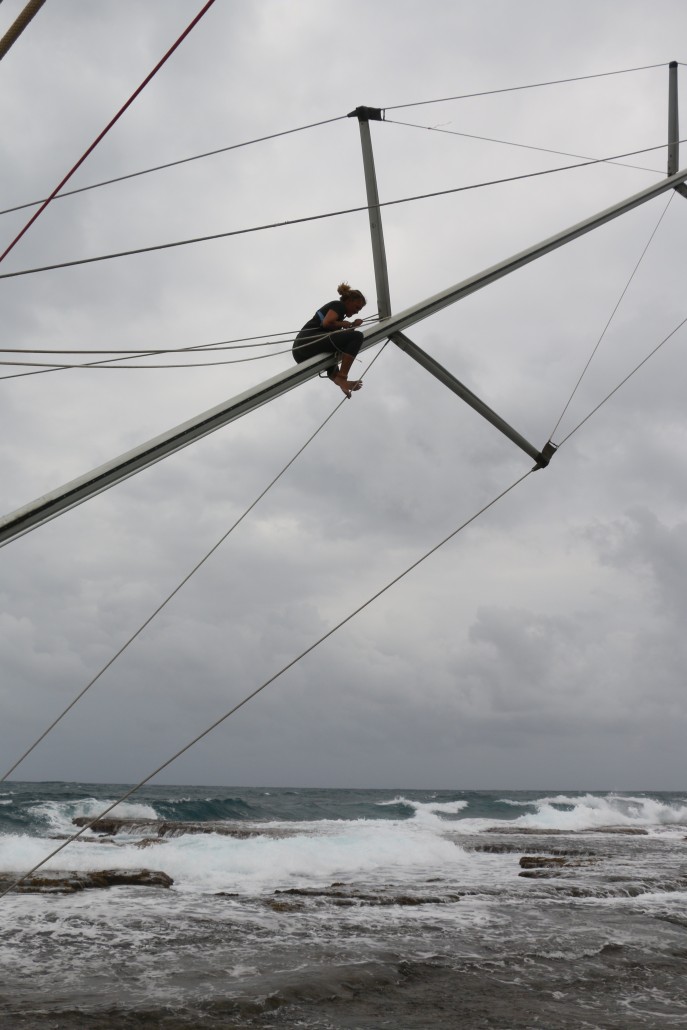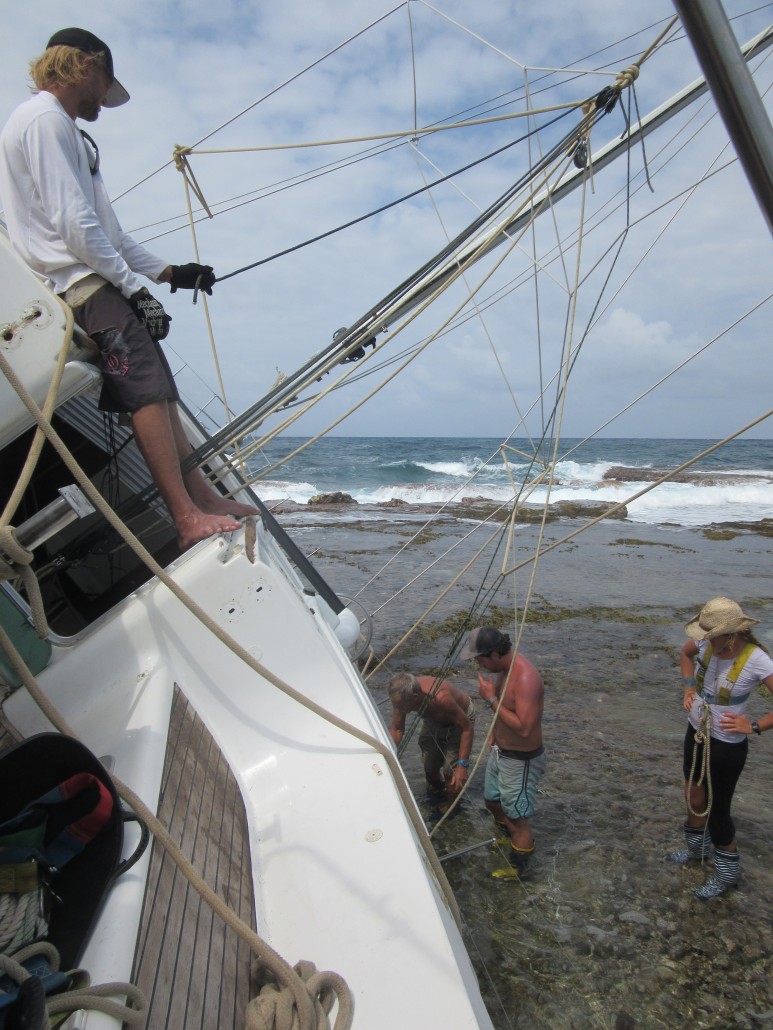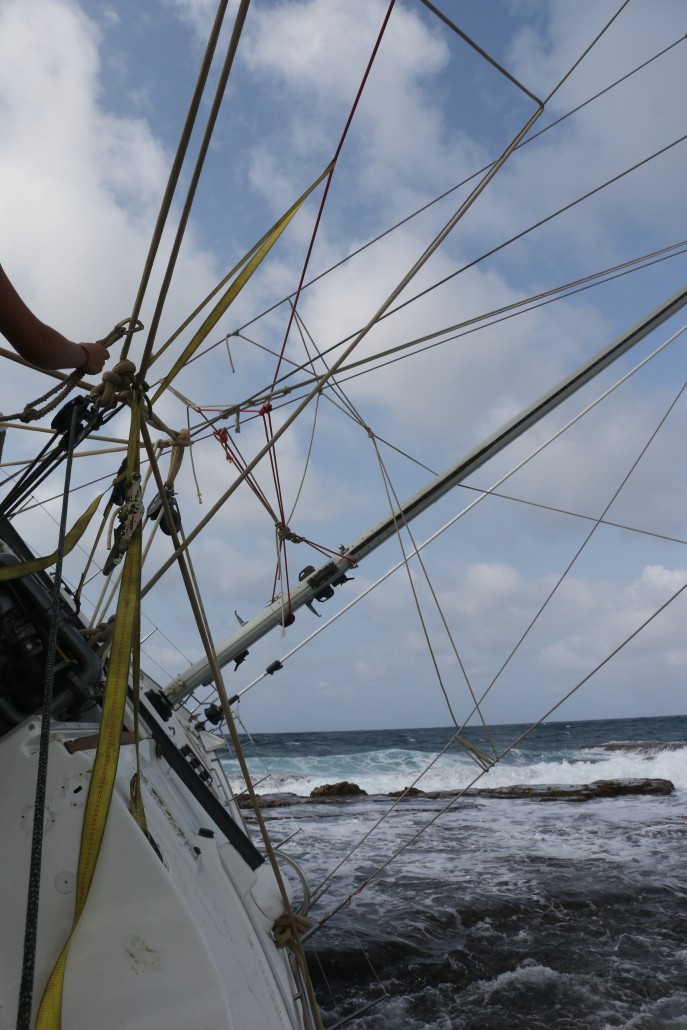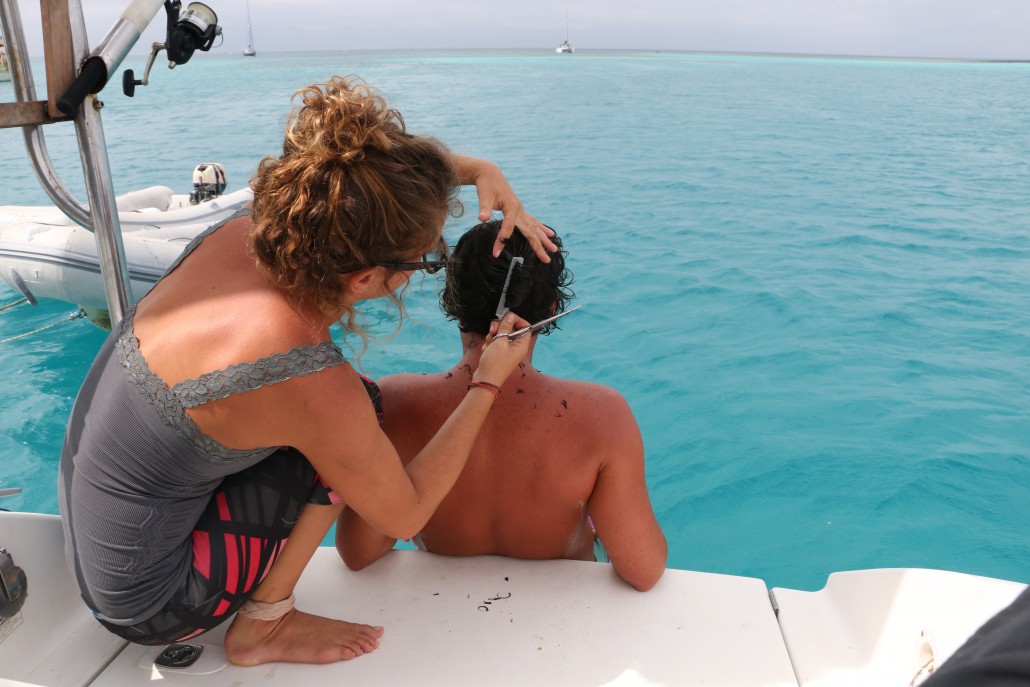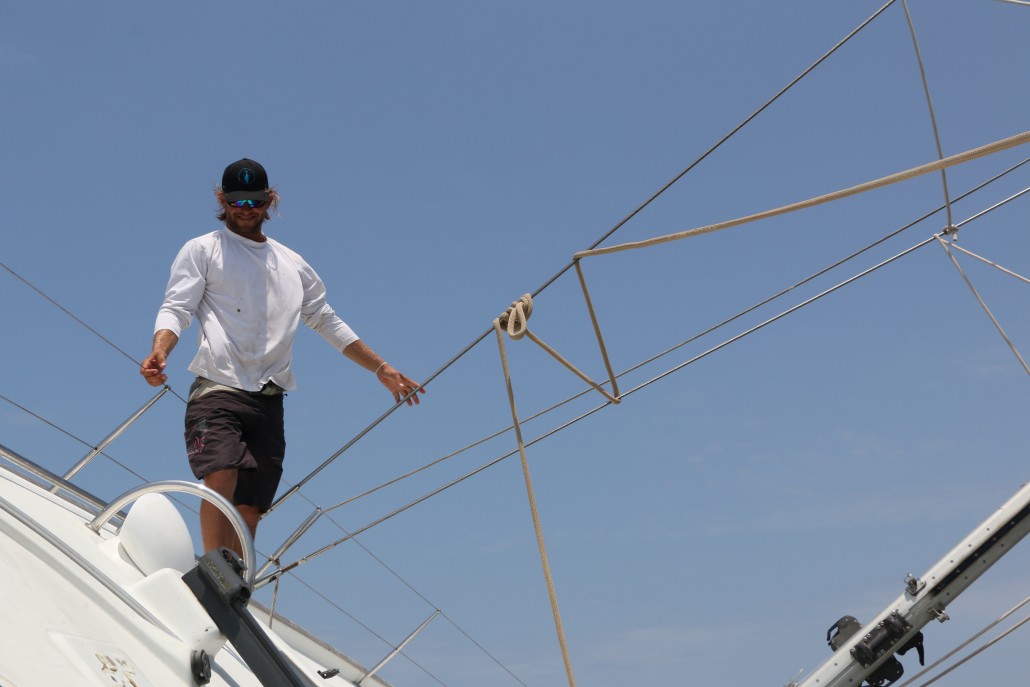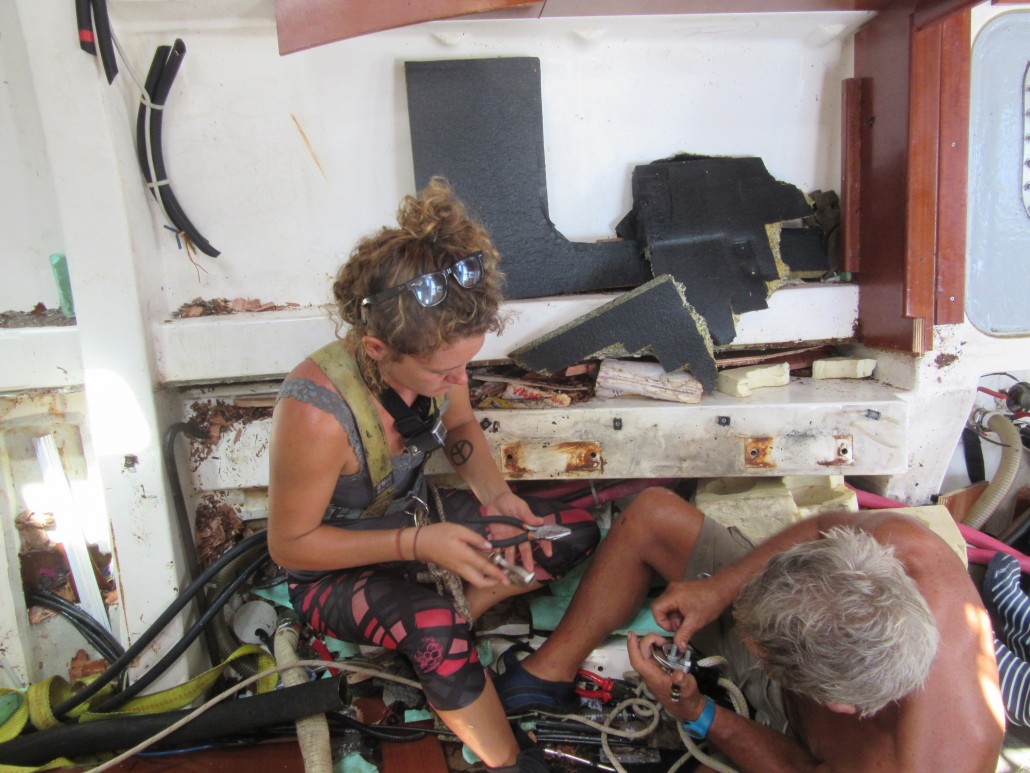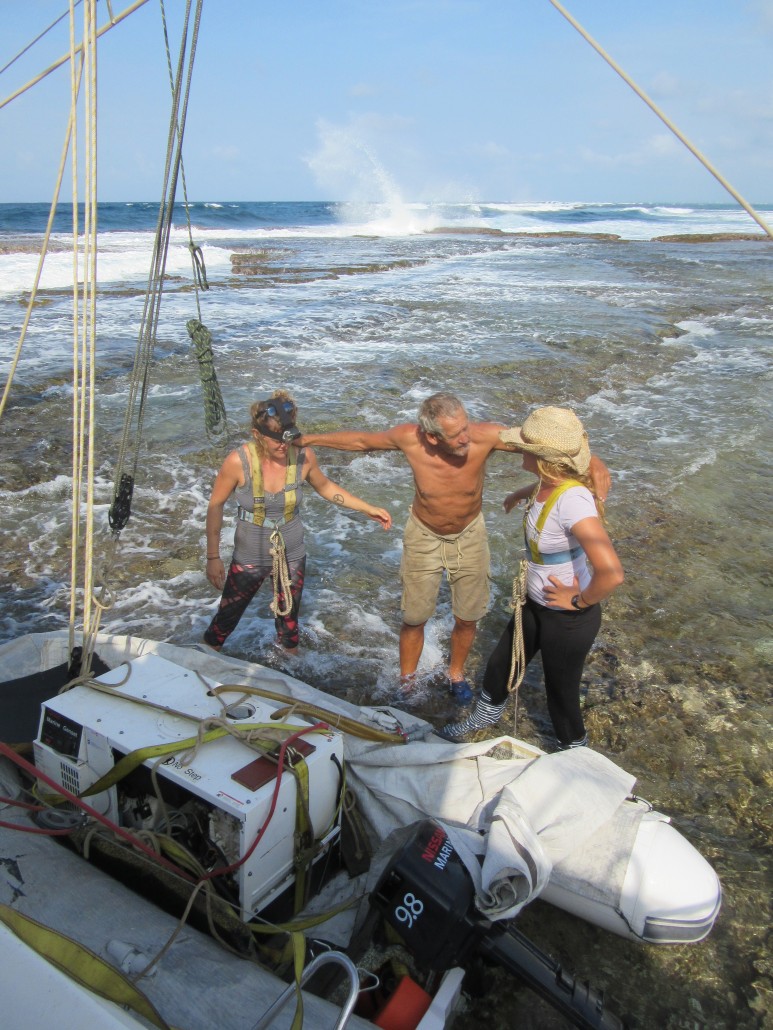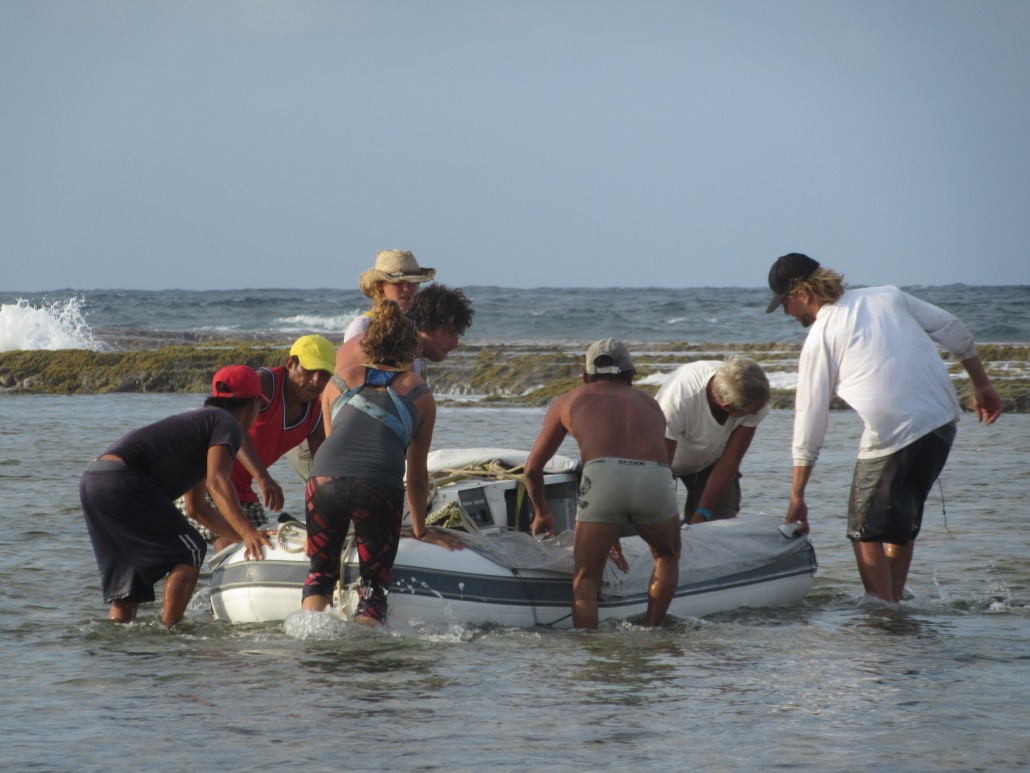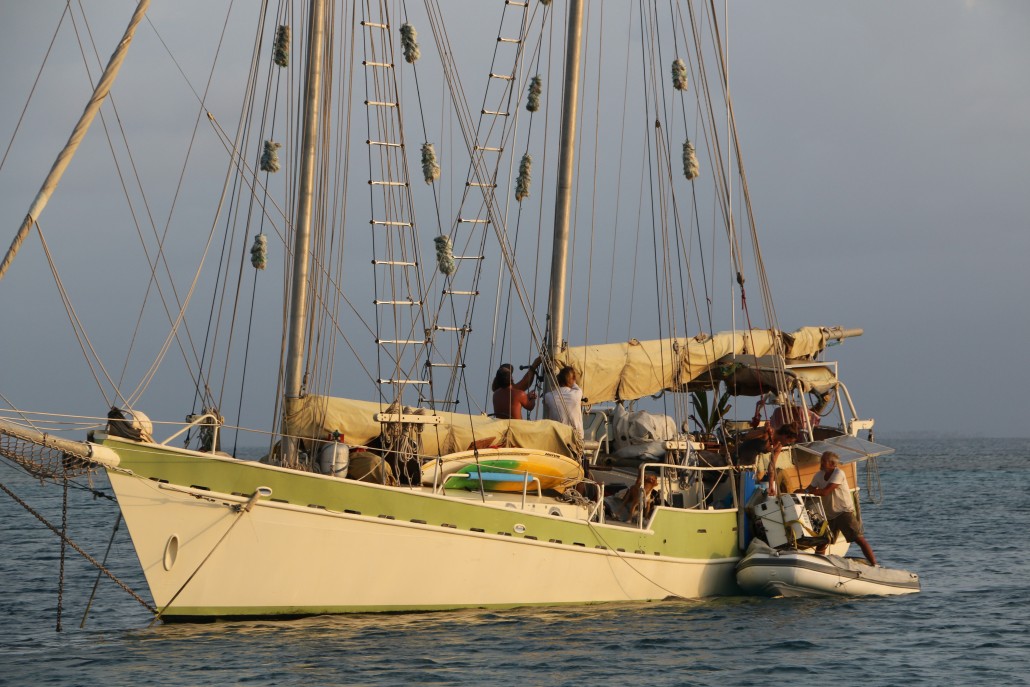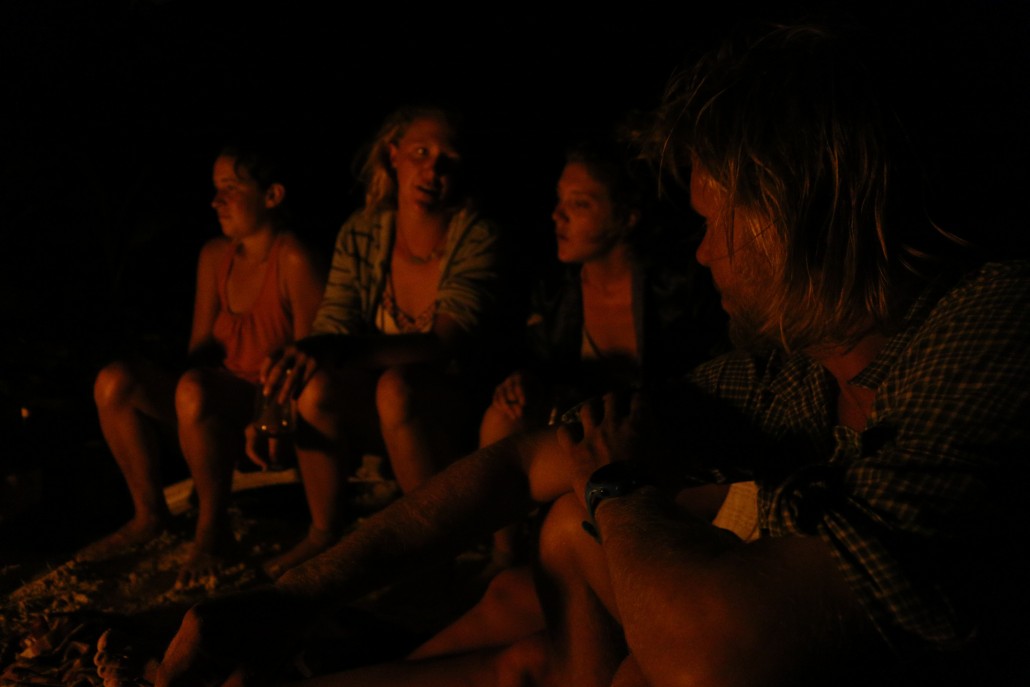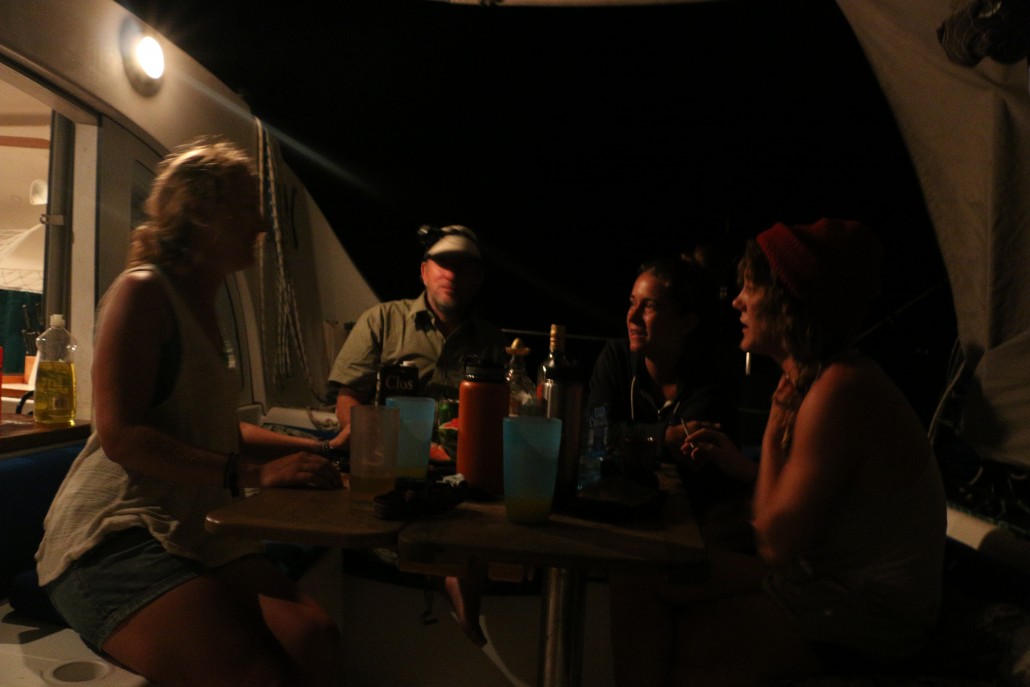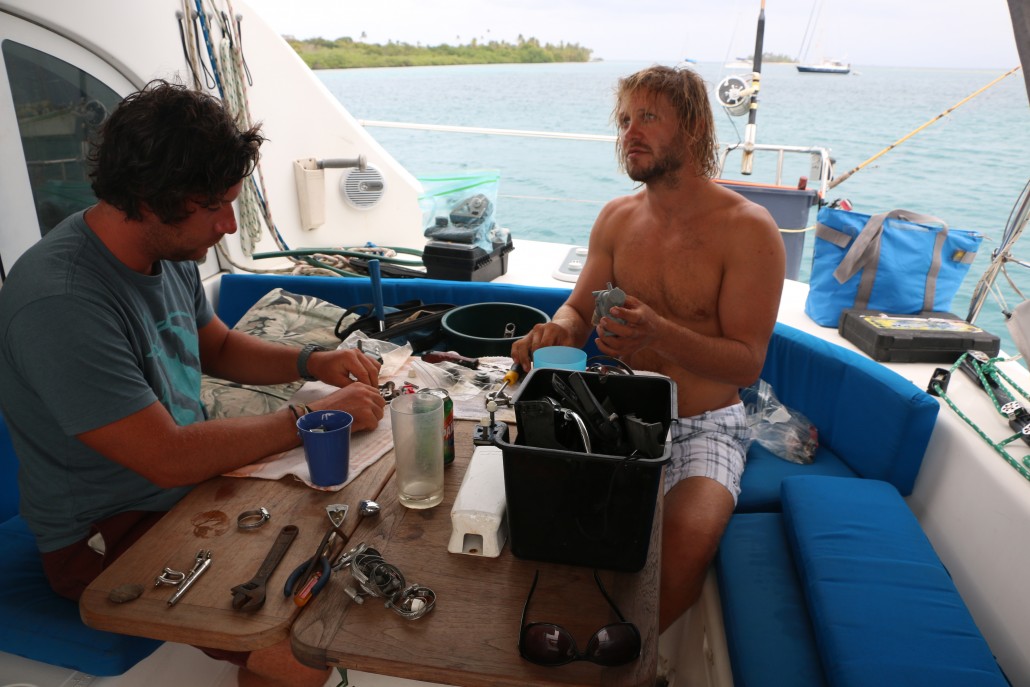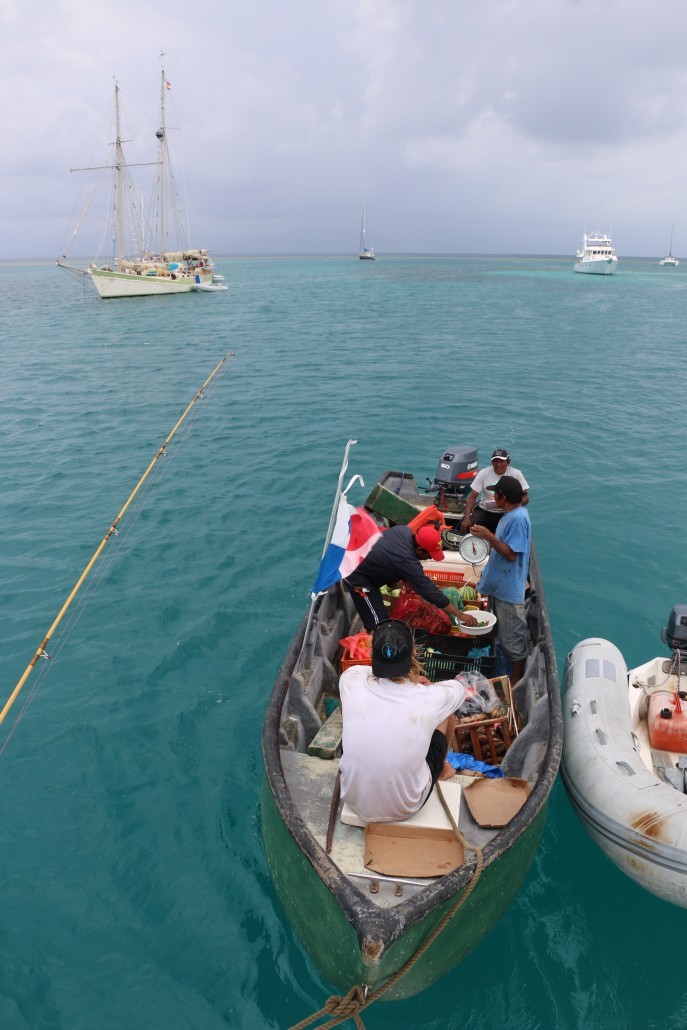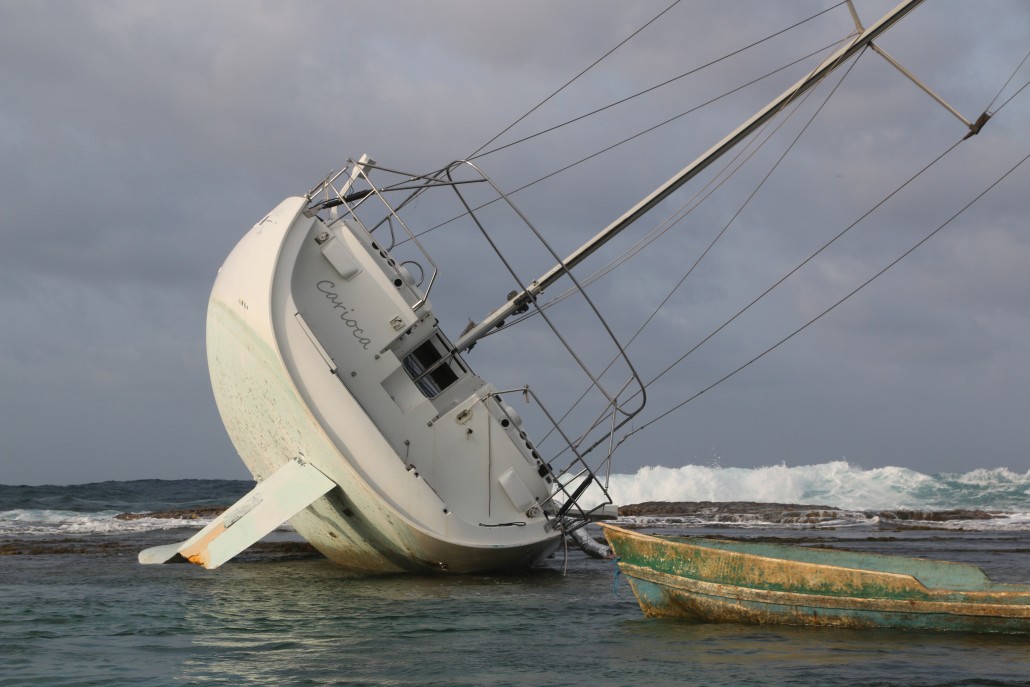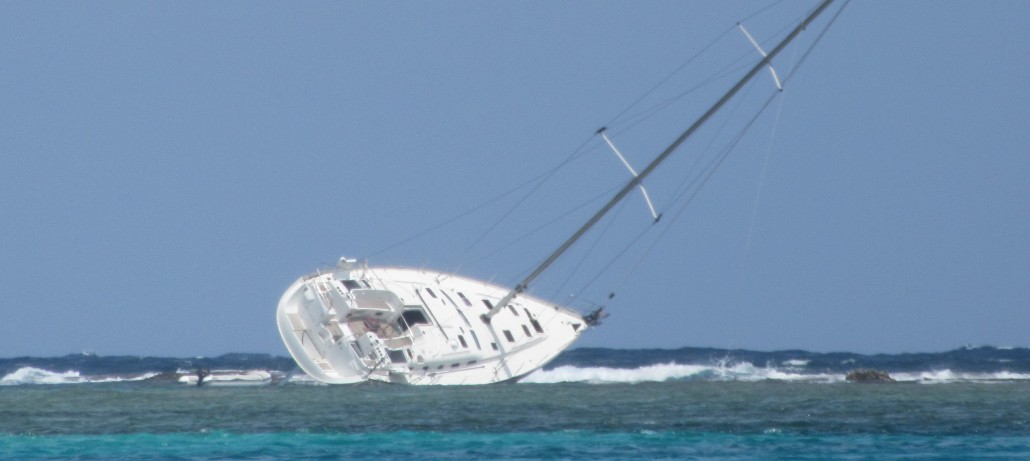Colombia. I don’t even know where to begin. But I guess I’ll begin at the beginning. Since that seems like a logical place to start.
Leaving the Rosarios
After a couple of days of relaxing and exploring, we were ready to move around. The question was whether to move to another island in the Rosarios or to head to Cartagena. After some back and forth we decided to go for a dive and work it out later. But first we did some research, the subject being: how many ways can one jump off of a sailboat?
After the research, we went for a dive. Nobody saw anything crazy, until the end of the dive where I saw a really nice Dog Snapper. Naturally he was on to me, and managed to escape with only a scare.
Post-dive we were all on the same page – let’s get to Cartagena.
So the next morning we woke up early, pulled up the dingy, and took off. The wind was very fickle and I quickly gave up resetting the sails every few minutes – choosing to drop sail and motor the remaining 20 miles. Pulling into Cartagena was cool.
To really grasp the impact it had on me and the crew – you have to consider that I hadn’t had S/V NOMAD anywhere near civilization during my entire time aboard. But now, I was motoring right into the middle of a fairly modern, historic, and friendly South American city. It was awesome and we were all really happy to be there.
There was about an hour of motoring once we got into the bay, to get to the area that we wanted to drop anchor. We were in no hurry, so I settled into the captain’s chair, watched the AIS, and fiddled with the autopilot to keep me entertained while I chose music to fit the mood.
Once close to Club Nautico (our anchorage), we putted around looking for a spot close to the dinghy dock. We dropped anchor in one spot, but eventually moved. Then at the second spot we dropped anchor we were a little close to a neighbor, but not close enough to bump. So I called it – we were officially in Cartagena.
Now, we’d been saving beers for our traditional anchor-beer. In fact, our last three beers had been off limits since San Blas. The fact that they actually survived until Cartagena is a miracle, but they did – and an anchor beer has never tasted so good. Nor has it been so earned, on S/V NOMAD. The crew all did their jobs. The captain managed to not sink the boat. And we actually arrived where we wanted to, without having to stop and ask for directions. That’s a win in my book.
Estoy En Cartagena
Things happen quickly in Cartagena. You make friends quickly. You find your way around quickly. People try to get your money quickly. Everything is fast, unless it comes to boat work or paperwork – in that case, it’s still manana-time.
So it wasn’t a huge surprise when we went ashore, found the main party street, found the main party hostel, had our first Colombian beer, paid for the dinghy dock access, went shopping, and checked into the country – all in the first two hours.
Enter the Disney’s
On the way back to the marina I saw a familiar face chatting streetside. We’d first met Nick and Andrea Disney (whose name I didn’t remember at the time) at Australia Day in San Blas. My buddy Rob had a group of people over for drinks the night before, and Nick and Amanda were part of that group. We’d met briefly, seen each other at the party – and then Nick and Andrea had sold us some rum (they needed American Dollars, I needed rum). Fancy seeing them here, huh?
The introductions were short, I was tired and hoping to get back to the boat ASAP. But there was an invite for a beer aboard their boat, which was docked at the marina. We said yes, and thus began one of my favorite cruising friendships to date. Many a sweaty Cartagena night was spent with these fine folks.
Of course the beers onboard Disneyland (our nickname for the Disney’s boat) led to some beers at a local bar. This bar had a pretty awesome band. We all enjoyed the music, the beer, and being in an actual bar. At this bar, we met Kevin and Pollo Brown. Kevin had a boat in the anchorage, Pollo Brown was the substitute guitarist. We enjoyed it so much that we felt it the next morning.
A Party?
The next day we were being lazy. Nobody felt like doing much so we didn’t. I settled into a series on the computer and drank cold drinks to fend off the sweltering heat. We cooked a tiny bit, just enough that we wouldn’t starve.
About 3 PM Kevin rowed by and asked if he could use my kitchen to cook food for his birthday party (which was that night). I said yes. He took off again. About an hour later Amanda came back to the mothership with interesting news: there was a party onboard S/V NOMAD very soon. This was news to me.
When I inquired who was throwing the party on my boat, and what the occasion was, it was apparent that there had been a bit of miscommunication. In that miscommunication, the entire anchorage had been invited to Kevin’s birthday party – on my boat.
No problem. I rallied. The party was kicking off at 5 PM. It was 4. I had some work to do. I started hiding valuables, setting up cushions, and putting dirty clothes where they were supposed to be. Unfortunately I had to pause Deadwood.
A Party!
About 5 PM people started showing up. By 7 PM there were 15 people onboard, most of which I didn’t know. Kevin showed up about 8 PM (late to his own party, on my boat) with two Israeli friends and started cooking hummus, pita bread, etc. At this point Pollo Brown and one of his friends showed up. Suddenly there were 22 people onboard, and the dinghies kept coming in. We had a date at a bar at 11PM, though.
There was a boatwide warning about 10 PM that we’d be leaving the boat (meaning the party needed to go elsewhere). By 11 PM it was more “you don’t have to go home, but you can’t stay here.” Even then, dinghies kept showing up for the party.
So we shut down the party, went to the bar, and watched some more music. We had so much fun, again, that we felt it the next day.
We’d accomplished alot in our first two days in Cartagena, including meeting half of the anchorage.
Clearing stuff up
Some quick notes, based on some recent feedback:
- I use “and” and “but” to start sentences often. I do it because I like to. I realize it’s not technically correct. But if we all only did things that were technically correct, it would be a very boring world. And I’m going to keep using “and” to start sentences (see what I did there?). And if you don’t like it, I’m sure there’s another sailor out there that writes more boring, technically correct stories. Find that guy/girl and read their stories to go to sleep :)
- I do know how to spell (despite evidence to the contrary). But writing takes time, editing takes more time, and posting takes even more time. That is to say, this all takes time away from sweating and bleeding in my engine rooms, which is where I should be right now. Please overlook the spelling errors, they are not intentional.
- I use punctuation incorrectly. That is (usually) purposeful. See bullet point number one regarding my general feelings about technically correct writing. Hint: it’s boring and lacks style.
- I often use fragments. I often use run-ons. Those are also done on purpose. See bullet point number one regarding my feelings about technically correct writing. Hint: it’s boring and lacks style.
- Cartagena is a very long word. I am tired of typing it. I now use CTG, which makes sense because it’s the airport abbreviation. I hope that doesn’t kill your buzz.
- On the shipwreck thing – there was a bit of drama following that whole ordeal. I’m opting to stay out of it, by not publishing it. That said, I did receive a couple of negative notes. To be clear: I received no financial compensation for helping. I asked for none, expected none, and that’s the way most sailors would treat other sailors. My crew and I helped because it was the right thing to do. But I did receive a gift from Hank, consisting of four blocks. I’m really happy with that gift as it gives me something to remember Hank and the shipwreck by.
- Here’s the official story regarding the shipwreck: The boat was a 2007 Beneteau OCEANIS 523. Hank was a very experienced sailor who knew his location to be 15 miles off the reef, who reduced sail, set the alarm and had a quick nap (it was night, he was singlehanding). The current pushed the yacht to shore. The yacht went right over the reef, keel and all, and fell onto its starboard side, sustaining most of the damage above the waterline. Eventually, post salvage, they floated the yacht off of the reef, repaired some holes and towed it back to where it sits today: Isla Linton. Special thanks to Rob (and Laurie, of course) for clearing up what was a murky situation and for looking after Hank.
So. With all that cleared up, I hope to be able to get back to regularly scheduled programming. Which is to say there’s still a (relatively) young, dumb gringo stumbling around CTG. And he’s still making bad decisions, then writing about them, purely for your entertainment.
Estoy En Cartagena

